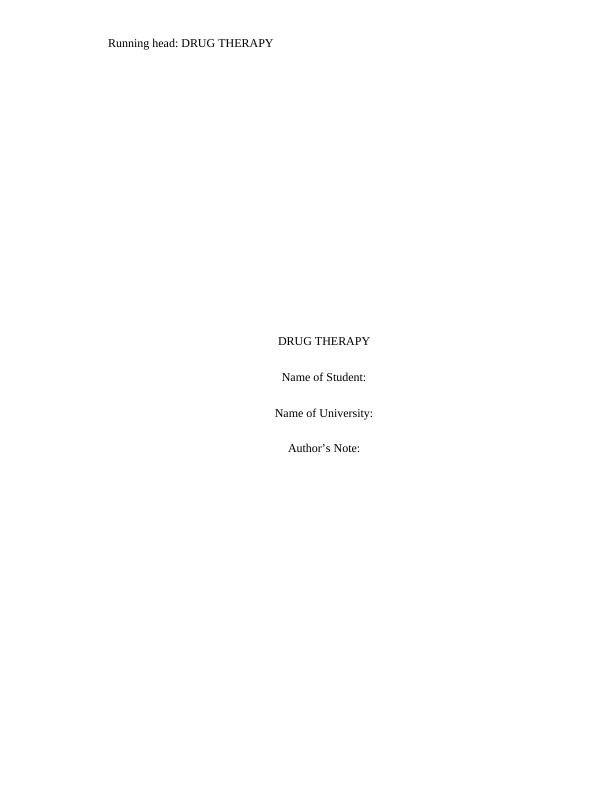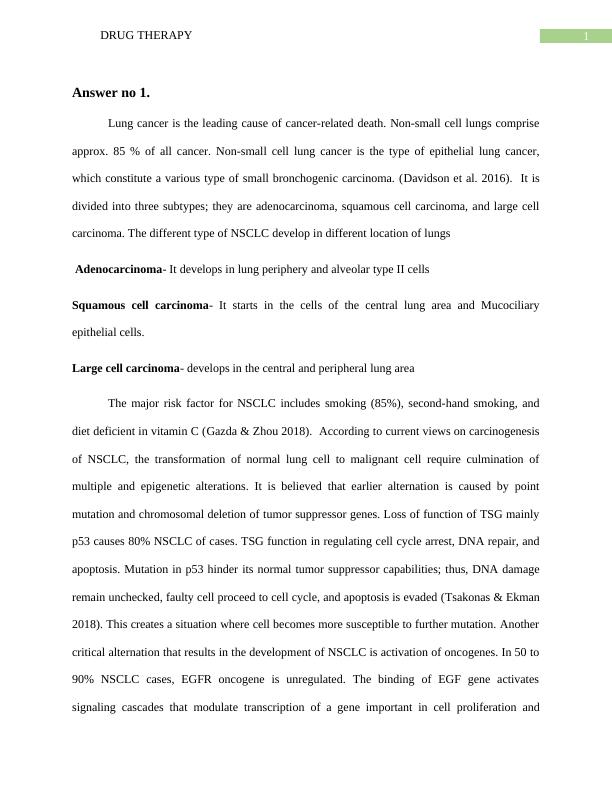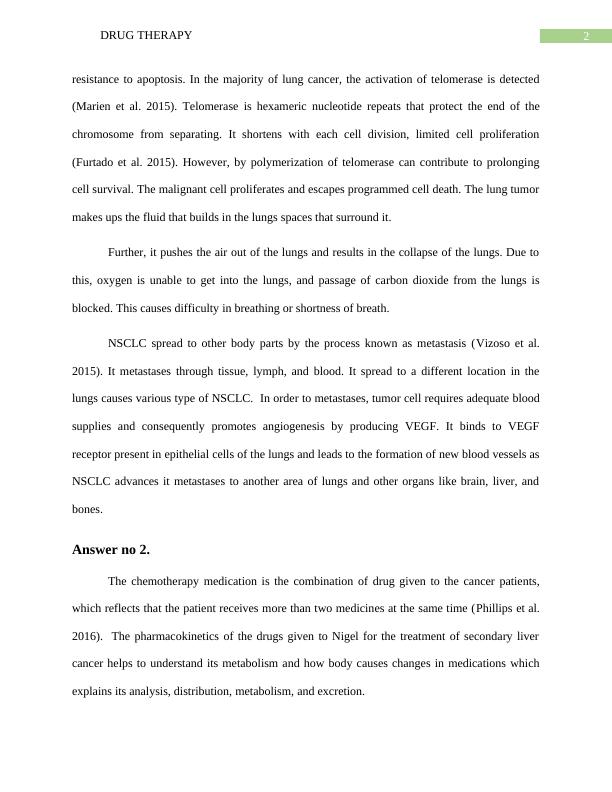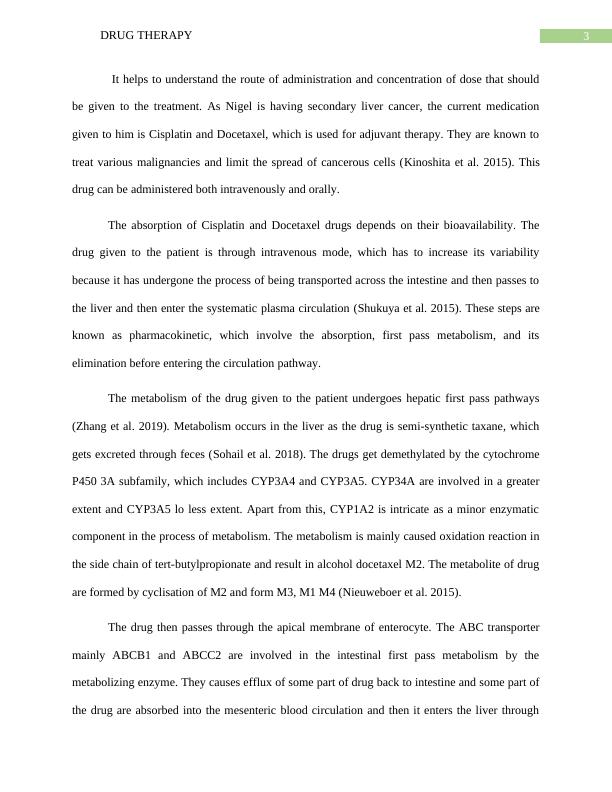Understanding Drug Therapy for Non-Small Cell Lung Cancer
15 Pages4854 Words35 Views
Added on 2023-03-23
About This Document
This document provides an in-depth understanding of drug therapy for non-small cell lung cancer, including its mode of action, side effects, and the specific drugs used. It also discusses the role of chemotherapy and immunotherapy in treating lung cancer. Study material and assignments on this topic are available on Desklib.
Understanding Drug Therapy for Non-Small Cell Lung Cancer
Added on 2023-03-23
ShareRelated Documents
End of preview
Want to access all the pages? Upload your documents or become a member.
Non-Small Cell Lung Cancer: Pathophysiology, Pharmacodynamics, and Effectiveness of Chemotherapy Drugs
|15
|4249
|260
Pathophysiology of colorectal cancer
|9
|1140
|265
Breast Cancer Assignment 2022
|7
|1676
|15
Lung Cancer: Pathophysiology, Treatment with Cisplatin, and Adverse Effects
|9
|1243
|44
Rectal Adenocarcinoma | Essay
|4
|896
|17
Understanding Cancer: Biology, Genetics, Types and Colon Cancer Cell Lines
|29
|8389
|113




